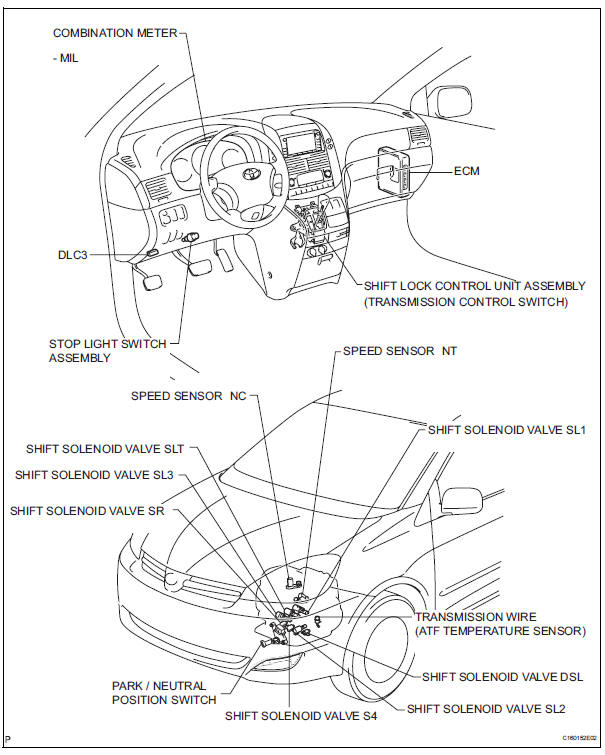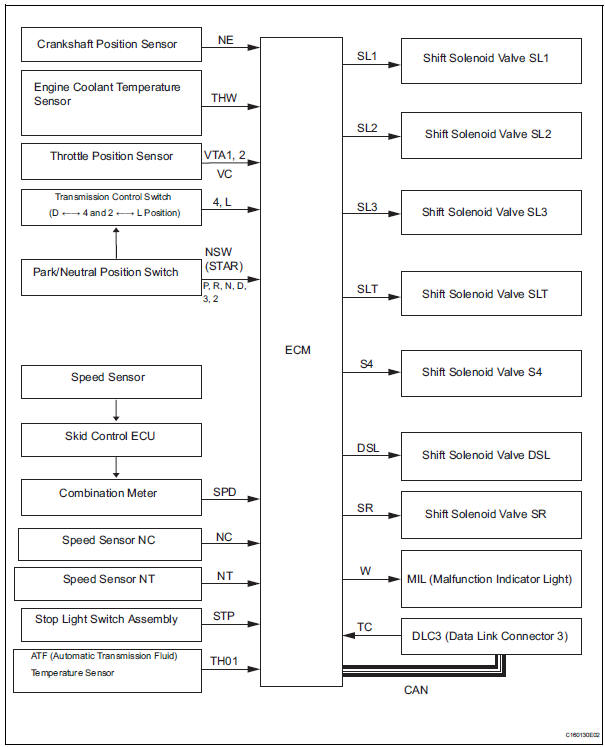Toyota Sienna Service Manual: Definition of terms
| Term | Definition |
| Monitor description | Description of what the ecm monitors and how it detects malfunctions (monitoring purpose and its details). |
| Related dtcs | Diagnostic codeV |
| Typical enabling condition | Preconditions that allow the ecm to detect malfunctions.
With all preconditions satisfied, the ecm sets the dtc when the monitored value(s) exceeds the malfunction threshold(s). |
| Sequence of operation | The priority order that is applied to monitoring, if multiple
sensors and components are used to detect the
malfunction.
While another sensor is being monitored, the next sensor or component will not be monitored until the previous monitoring has concluded. |
| Required sensor/components | The sensors and components that are used by the ecm to detect malfunctions. |
| Frequency of operation | The number of times that the ecm checks for malfunctions
per driving cycle.
"Once per driving cycle" means that the ecm detects malfunction only one time during a single driving cycle. "Continuous" means that the ecm detects malfunction every time when enabling condition is met. |
| Duration | The minimum time that the ecm must sense a continuous deviation in the monitored value(s) before setting a dtc. This timing begins after the "typical enabling conditions" are met. |
| Malfunction thresholds | Beyond this value, the ecm will conclude that there is a malfunction and set a dtc. |
| MIL operation | Mil illumination timing after a defect is detected.
"Immediately" means that the ecm illuminates mil the instant the ecm determines that there is a malfunction. "2 Driving cycle" means that the ecm illuminates mil if the same malfunction is detected again in the 2nd driving cycle. |
| Component operating range | Normal operation range of sensors and solenoids under normal driving
conditions.
Use these ranges as a reference. They cannot be used to judge if a sensor or solenoid is defective or not.V |
Parts location

System diagram
The configuration of the electronic control system in the U151E automatic transaxles is as shown in the following chart.

 Precaution
Precaution
NOTICE:
Perform the RESET MEMORY (AT initialization) when
replacing the automatic transaxle assembly, engine
assembly or ECM (See page AX-16).
Perform the REGISTRATION (VIN regi ...
 System description
System description
1. SYSTEM DESCRIPTION
(a) The ECT (Electronic controlled automatic
transmission/transaxle) is an automatic
transmission/transaxle that electronically controls
shift timing using the ECM. The ECM d ...
Other materials:
SM Solenoid Circuit
DTC C1225/25 SM Solenoid Circuit
DESCRIPTION
This solenoid turns on when receiving signals the ECU and controls the
pressure acting on the wheel
cylinders to control the braking force.
WIRING DIAGRAM
Refer to DTCs C0226/21, C0236/22, C0246/23 and C0256/24 (See page BC-105).
INSPECTION PR ...
Removal
1. REMOVE REAR SEAT LEG SIDE GARNISH SUBASSEMBLY LH
Disengage the clips and remove the seat leg side
garnish.
2. REMOVE REAR NO. 2 SEAT ASSEMBLY LH
Remove the bolt and locus cable.
Remove the 2 bolts and seat.
Remove the 2 headrests.
...
Open in Driver Side Squib 2nd Step Circuit
DTC B1181/18 Open in Driver Side Squib 2nd Step Circuit
DESCRIPTION
The driver side squib 2nd step circuit consists of the center airbag sensor
assembly, the spiral cable and
the steering pad.
The circuit instructs the SRS to deploy when deployment conditions are met.
DTC B1181/18 is reco ...
